The Apple iPhone 11, 11 Pro & 11 Pro Max Review: Performance, Battery, & Camera Elevated
by Andrei Frumusanu on October 16, 2019 8:30 AM ESTDisplay Measurement
When it comes to displays, last year's iPhone XS didn’t showcase any major display changes compared to the original iPhone X, as the two phones seemingly shared the same display panel. In contrast to that situation, for the new iPhone 11 Pros, Apple is advertising using a newer generation panel which brings notable improvements with it.
In terms of dimensions or resolution, there’s no visible changes on the new panels, and you’d have to look under the hood to see what has actually changed. The most notable improvement this year is a switch in the OLED emitter material that’s been used by Samsung in producing the new screen. The new generation emitter was first introduced in the display panel of the Galaxy S10, and to my knowledge it has subsequently only been used in the Note10 series as well as the new OnePlus 7T (regular version only). The iPhone 11 Pro phones now join this limited group of devices, and the biggest improvements to the user experience will be higher maximum brightness levels as well as improved power efficiency.
The regular iPhone 11, on the other hand does not seem to have changed much from the iPhone XR. It remains a relatively lower resolution LCD screen, although its display characteristics remain excellent.
We move on to the display calibration and fundamental display measurements of the iPhone 11 screens. As always, we thank X-Rite and SpecraCal, as our measurements are performed with an X-Rite i1Pro 2 spectrophotometer, with the exception of black levels which are measured with an i1Display Pro colorimeter. Data is collected and examined using SpectraCal's CalMAN software.

In terms of maximum brightness, Apple has advertised that the new iPhone 11 Pro’s can reach up to 800nits of brightness displaying regular content. We’re able to verify this, as our 11 Pro Max sample reached 807 nits while the 11 pro reached 790 nits. Consequently, it’s quite odd to see that the LCD-based iPhone 11 is now the lowest brightness device in the line-up. As always, Apple doesn’t make use of any brightness boost mechanism and thus allows its peak brightness to be achieved in any scenario.
Apple also advertises that the screen does go up to 1200 peak brightness in HDR content, however I haven’t been able to go ahead to verify this in our current test suite.
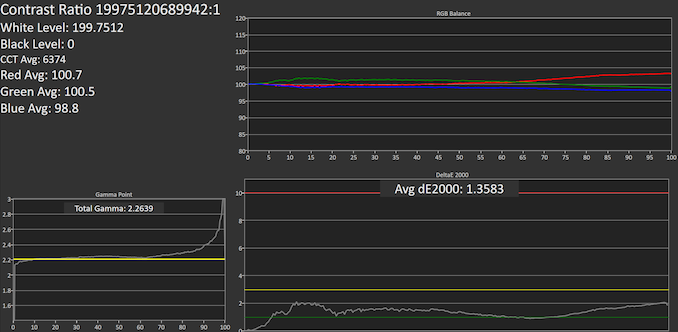
SpectraCal CalMAN
iPhone 11:
iPhone 11 Pro:
iPhone 11 Pro Max:
In the greyscale tests, all the iPhones perform extremely well, as expected. The Pro models do showcase a tendency to have slightly too strong red levels, so their color temperature is ever so slightly too warm. This characteristic diminishes the higher in brightness we go on the Pro models. The iPhone 11 has a weakness in the greens, so its color temperature is a above the 6500K white point target.
Gamma levels are excellent and target levels of 2.2. The Pro models are veering off towards higher gamma at higher picture levels, something that isnt as prominently exhibited by the iPhone 11. I’m not sure if this is due to a non-linear APL compensation of the phone screen during our measurement patterns, or if there’s an actual issue of the calibration.

iPhone 11 / SpectraCal CalMAN
iPhone 11 Pro / SpectraCal CalMAN
iPhone 11 Pro Max / SpectraCal CalMAN

The dE2000 deviation scores for the Pro models this year are slightly worse than what we saw in last year’s XS devices, however it’s still firmly among the best in class devices out there in the market, and you’d be hard pressed to perceive the small deviations. The iPhone 11 oddly enough does fare a bit worse off than the iPhone XR due to the larger deviations in color balance.
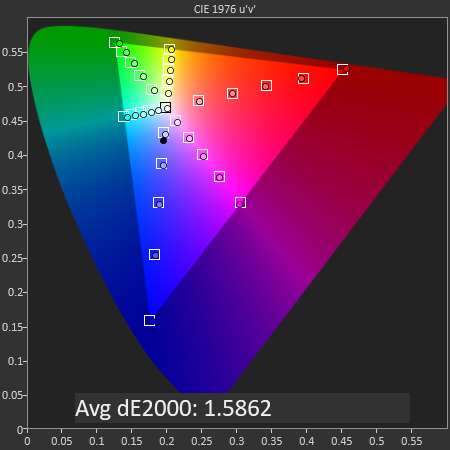
iPhone 11 / SpectraCal CalMAN
In the sRGB color space (default device content), the iPhone 11 performs extremely well with only minor shifts in hue in the greens.
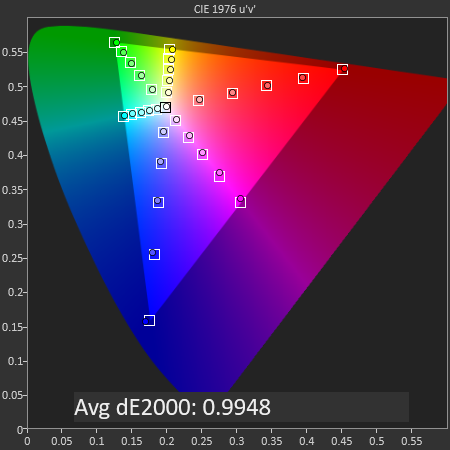
iPhone 11 Pro / SpectraCal CalMAN
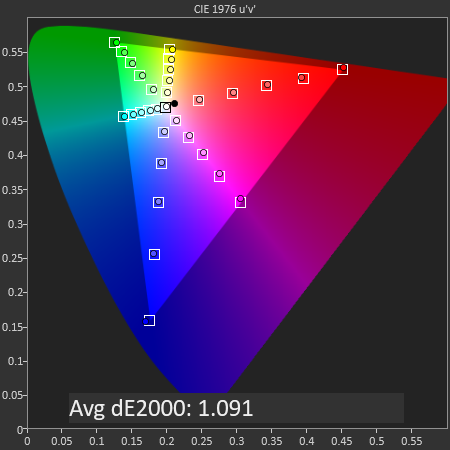
iPhone 11 Pro Max / SpectraCal CalMAN
In the same test, both the Pro models are showcasing exemplary accuracy.

The Pro models are just a bit worse off than the XS models of last year, but again these are among the most accurate displays you’ll find out there – mobile devices or not. The iPhone 11 is still excellent, although showing a bit larger deviation compared to the XR.
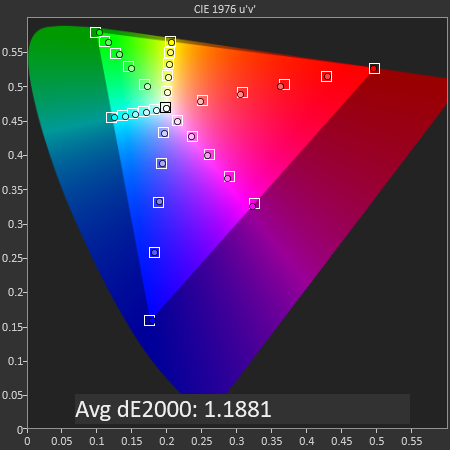
iPhone 11 / SpectraCal CalMAN
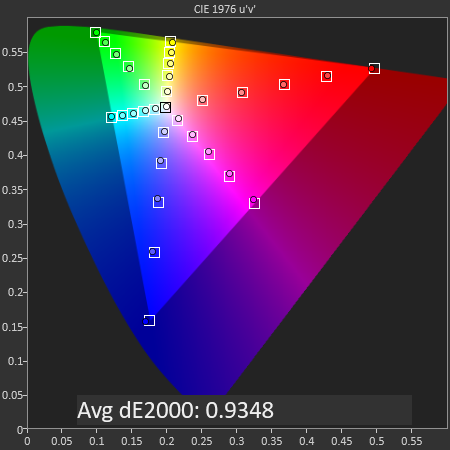
iPhone 11 Pro / SpectraCal CalMAN
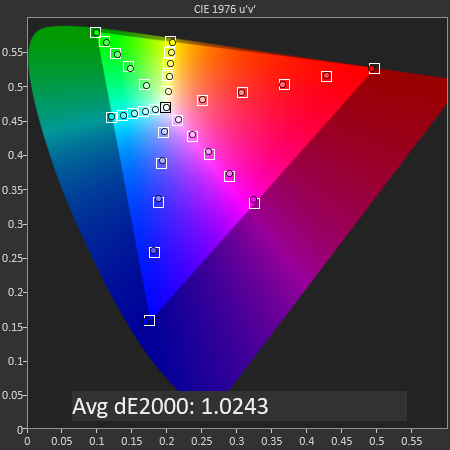
iPhone 11 Pro Max / SpectraCal CalMAN
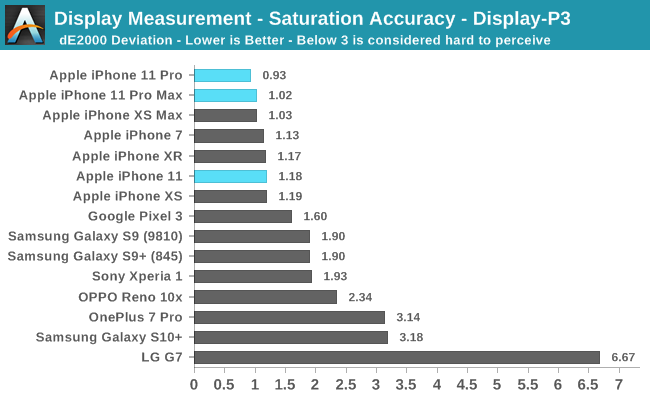
For Display P3 content, the iPhone 11 Pro models showcase the best saturation accuracies we’ve ever measured on any display. This time around, the iPhone 11 is in line with the XR.
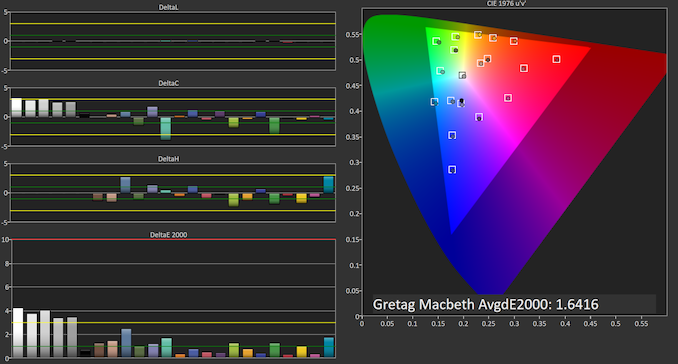

iPhone 11 / SpectraCal CalMAN
In the Gretag-MacBeth test of common tones, the only real issue of the iPhone 11 is the whites which had showcased a weakness of greens. Notice how the luminosity of the tones are essentially absolutely perfect.


iPhone 11 Pro / SpectraCal CalMAN
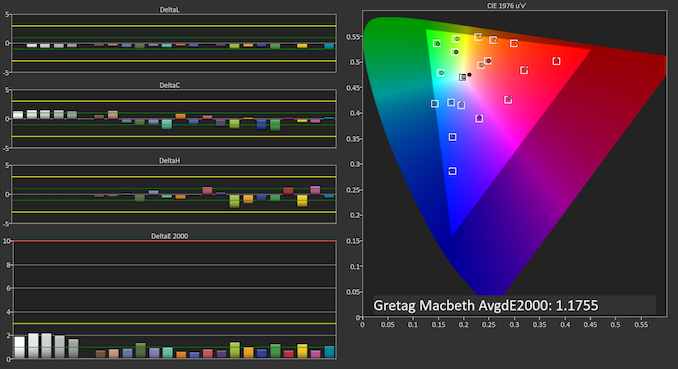

iPhone 11 Max Pro / SpectraCal CalMAN

Overall in terms of the color calibration and screen quality, the iPhones are the very best in the industry. There’s really nothing I can say about them as they’re class-leading in every regard.
The iPhone 11’s LCD screen isn’t for my taste due to the lower resolution, which frankly does bother me, and it certainly doesn’t have the same contrast characteristics as the Pro models. So while colors are still extremely good, it remains a compromise in 2019 when essentially every manufacturer has moved on to adopt OLED screens.
Display Power Measurements - Generational Improvements
Naturally, we didn’t want to finish the display evaluation section without verifying Apple’s claims about the new improved power efficiency of the iPhone 11 Pro panels.
Comparing the three generations of identical format iPhones, we again see that the display power consumption between the original iPhone X and the XS didn’t differ much at all. Plotting the new iPhone 11 Pro in the chart however we immediately see the difference in the new generation.
At equal brightness levels, Apple has indeed been able to improve the power efficiency of the panel by 15% - just as Apple’s marketing described it. We also see how the new panel expands past the brightness limits of the X and XS, reaching 800nits. This does come at a cost however, as the improved power efficiency isn’t able to completely make up for the larger brightness increase, so the maximum power consumption of the screen displaying full white does rise from 2.6W to 3.1W.


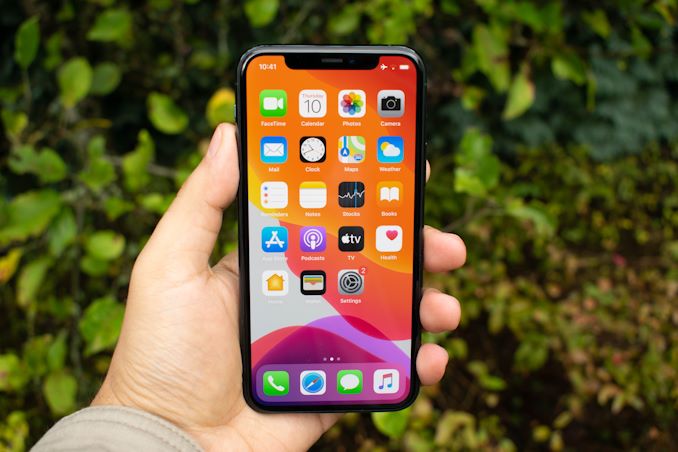









242 Comments
View All Comments
Quantumz0d - Wednesday, October 16, 2019 - link
Lol. Very funny. Just 2.5% of the screen, why not take a pencil and poke in your laptop/monitor display and say just a 0.3% like Samsung HOLED or this dead pixel zone. And put an RGB strip around/inside it to make it similar to S10 Hole notification led.A phone's primary component is Display which allows for man-machine interface, and if that itself is ruined no matter how much value the device has, it is a complete waste. Even Google realized this after their horrible Watertub 3XL disaster notch.
Notch, Hole are worse than an Asymmetric bezel on Pixel 4 and Symmetric bezels are much better to look at - V30, ROG II, Note 8, S8 while S9 and Note9, OP7 Pro, Zenfone 6, Nex have asymmetric design but they are fine over the dreaded Notch abomination or holes anyday anytime.
Apple did this crazy thing in 21 century. If engineers from CRT era were there they'd be laughing like no tomorrow. Kudos to Apple for creating something utter miserable and complete bullshit.
Why didn't the CMOS sensors / Panavision or any Film cameras or any Display shape have a notch/hole or any. Or our eyes or any animal eyes, even the insects like spiders with many eyes have full uninterrupted vision without no hole or notch in their eyes, hell even mirrors ? Until this POS hit the market the perception of a display was perfectly uniform with no interruption, it all changed thanks to Apple. They should be ashamed of creating the worst abomination while claiming the best industrial design.
"Sir" Jony Ive should be ashamed of his Knighthood lmao. Wonder he left because of Apple that he couldn't stand this Notchabomination as a black mark on his life forever (Also not note, since Chief Design Officer role doesn't exist anymore and the design teams report to Operations COO, It's interesting as if Andrei says this is the last Notch BS from Apple or whether we will see a smaller notch in 2020 lol)
uhuznaa - Thursday, October 17, 2019 - link
You have a literal blind spot in your eye where the optical nerve passes through the retina. Really. You just don't see it because it's always there. Same as with the notch by the way...Quantumz0d - Thursday, October 17, 2019 - link
No man stop convincing yourself, Retina blind spot is not notch lol. 210 Degree FoV and a blind spot how can you relate these ? Insane.uhuznaa - Thursday, October 17, 2019 - link
OK, so then just put a piece of black tape on the parts of the screen left and right of the notch and you have a bezel instead if you like this better.Seriously, what's so bad about having a bezel on top that still displays a clock and a few status symbols in the left and right corners? Exactly this is what the notch is. It just means using parts of the bezel in a limited but still useful way. I really don't understand what you notch-haters want instead of a notch. A full-width notch (aka "bezel")? Why would this be better? It would just push the status bar down, leaving less room for actual content for apps.
WinterCharm - Thursday, October 17, 2019 - link
The notch is the only weak excuse some Android fanboys have to convince themselves about why they can't move to iPhone.willis936 - Friday, October 18, 2019 - link
The space is virtually useless and makes for a more difficult user experience. Nothing is gained by forcing information into a tiny nook or to have the user need to stretch to hit a small target. Just keep the display a rectangle. It just works.Quantumz0d - Sunday, October 20, 2019 - link
Exactly, but look at the Apple apologists they will buy excuse for whatever they seem fit to make the company look great. Any wrong pointing bam personal attacks, eh. New low for AT commenters to be honest. "Insecure Android phone" these noobs do not know how an Israeli company deals with breaking smartphones. Idiots. Only god can help them.Anand2019 - Monday, October 21, 2019 - link
"Only god can help them". What does a fantasy figure have to do with this? Maybe santa can help them too?Xyler94 - Thursday, October 17, 2019 - link
Every time I look at my mother's iPhone X, the first thing that pops into my mind is "why do people fuss so much about the notch?"It's barely noticeable when you use it. It's just like your nose. your brain will ignore your nose when you're looking, but the moment you realize your nose is in your view, you'll see it again. Same as the notch, don't even think about it, and it becomes a non-factor.
Total Meltdowner - Thursday, October 17, 2019 - link
ahahahahahahahahaahAHAhahaha!